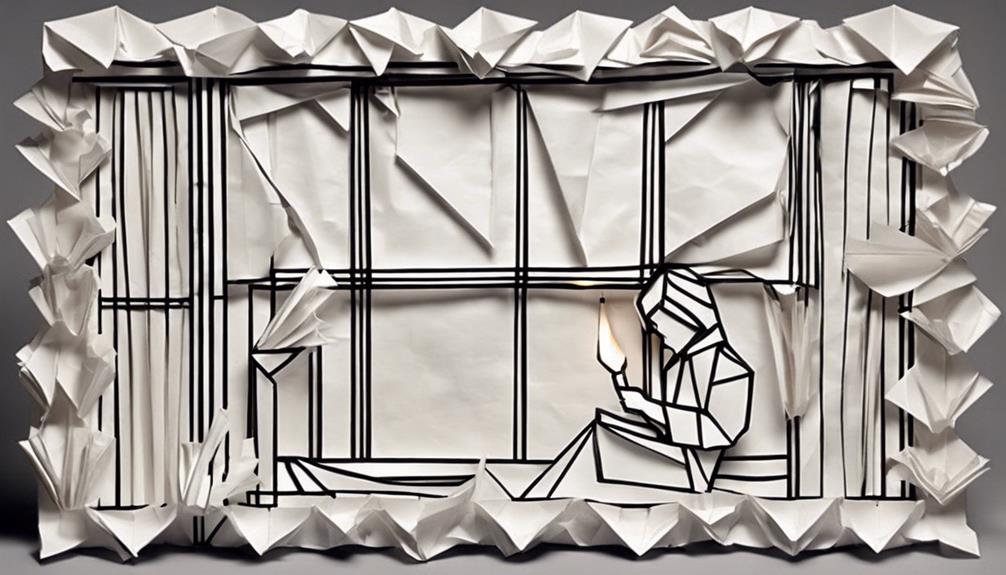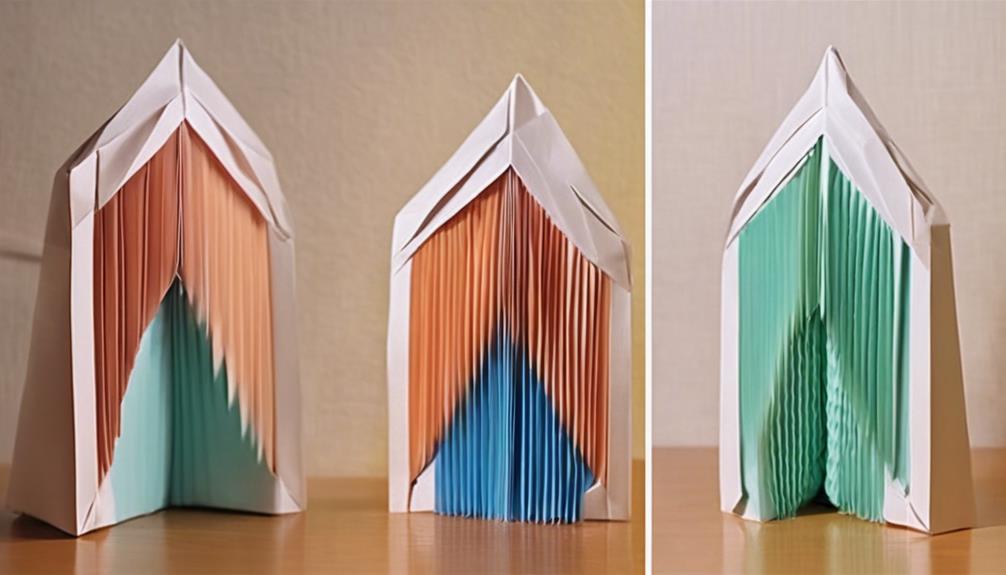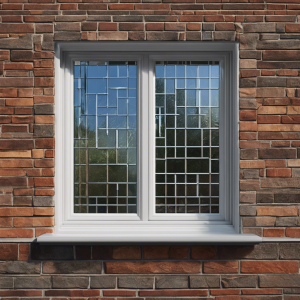When facing the icy grip of winter, staying warm at home can be as crucial as a steadfast ship navigating stormy seas. With temperatures dropping outside, the battle to keep your home cozy and inviting becomes all the more challenging. But fear not, for ten ingenious winter home hacks are awaiting your discovery, promising to transform your living space into a snug sanctuary against the cold. So, bundle up and prepare to uncover the secrets that will make this winter your most comfortable yet.
1. Seal Drafty Windows

To effectively reduce heat loss and keep your home warm during the winter, you should start by sealing drafty windows. Drafty windows can be a major source of heat loss in your home, leading to higher energy bills and a less comfortable living space.
One of the most effective ways to address this issue is by using window weatherstripping. Weatherstripping comes in various materials such as felt, foam, or vinyl, and it can be easily applied around the edges of your windows to create a tight seal that prevents warm air from escaping and cold air from seeping in. Make sure to measure the dimensions of your windows accurately before purchasing weatherstripping to ensure a proper fit.
Additionally, caulking any gaps or cracks around your windows is crucial in preventing drafts. Cold air can easily enter through these openings, causing your heating system to work overtime to maintain a comfortable temperature. Use a caulking gun to apply a bead of caulk along the gaps, ensuring a continuous seal.
Silicone or latex-based caulks are recommended for their durability and flexibility. Remember to check both the interior and exterior of your windows for gaps that need sealing, as outdoor drafts can be just as detrimental to your home’s warmth. Properly weatherstripping and caulking your drafty windows can significantly improve your home’s insulation and reduce heat loss during the winter months.
2. Use Thermal Curtains
Consider investing in thermal curtains to help insulate your windows and keep your home warmer during the winter months. When selecting thermal curtains, opt for thicker materials like velvet or suede that provide better insulation. These curtains act as barriers, preventing cold air from seeping in and warm air from escaping, thus enhancing your home’s energy efficiency.
Thermal curtains come in various styles and colors, allowing you to choose ones that complement your interior decor while serving a practical purpose. Look for curtains with multiple layers or those specifically labeled as thermal or blackout curtains for maximum insulation. Remember, the better the insulation, the more energy you save.
To maximize the effectiveness of your thermal curtains, ensure they fit snugly against the window frame and floor. This helps prevent any drafts or heat loss around the edges. Additionally, consider closing the curtains at night to keep the warmth inside and opening them during the day to let the sunlight naturally heat your home.
3. Reverse Ceiling Fans

To maximize the warmth in your home during winter, remember that the direction of your ceiling fan matters. Running your fan clockwise at a low speed helps push warm air trapped near the ceiling down to where you need it. Not only does this simple adjustment keep you cozier, but it can also save energy by reducing the need for constant heating.
Fan Direction Matters
Adjusting the direction of your ceiling fan to reverse can help distribute warm air more efficiently during the winter months. Here’s why reversing your fan matters:
- Maximize Warmth: Reversing your ceiling fan pushes the warm air that rises to the ceiling back down into the room, keeping you cozy.
- Energy Efficiency: By circulating the warm air, you can lower your thermostat a bit, saving on heating costs.
- Balanced Temperature: Achieve a more consistent temperature throughout the room by using your ceiling fan in reverse mode.
Energy Savings Tip
For enhanced energy savings in the winter, ensure your ceiling fans are set to operate in reverse mode. By running your ceiling fan clockwise on a low setting, you can push the warm air that naturally rises back down into the room. This simple hack helps to distribute heat more evenly, allowing you to lower your thermostat and reduce heating costs.
Additionally, combining this technique with proper furnace maintenance and weather stripping can further enhance your home’s energy efficiency. Regular furnace maintenance ensures optimal performance, while weather stripping helps seal any drafts, preventing heat from escaping. Implementing these energy-saving practices will not only keep you cozy during the cold months but also help you save on your energy bills.
4. Insulate Attic
Consider adding insulation to your attic to help keep your home warm during the winter months. Proper insulation can make a significant difference in retaining heat and reducing energy costs. Here are some steps to guide you through the process:
- Assess Your Current Insulation: Start by checking the existing insulation in your attic. Determine if it is sufficient for your region’s climate. Inadequate insulation can lead to heat loss, making your heating system work harder to maintain a comfortable temperature.
- Seal Gaps and Cracks: Before adding new insulation, ensure that any gaps or cracks in the attic are properly sealed. This helps prevent warm air from escaping and cold air from seeping in. Use caulk or foam insulation to seal these areas effectively.
- Choose the Right Insulation Type: Select insulation that is suitable for your attic space. Common options include fiberglass, cellulose, and spray foam insulation. Consider factors like R-value, which indicates the insulation’s effectiveness, and any local building codes that may influence your choice.
5. Install Door Draft Stoppers

To further enhance your home’s insulation and keep the cold air out, consider installing door draft stoppers to prevent heat loss and maintain a cozy indoor environment. Door draft stoppers are an easy and cost-effective way to seal gaps at the bottom of your doors, preventing cold drafts from entering your home and warmth from escaping.
Not only do they help in conserving energy and reduce heating costs, but they also add a decorative touch to your space, aligning with DIY door decor trends and winter decor styles.
You can find a variety of draft stoppers in different designs, colors, and materials to match your home’s aesthetic. Whether you prefer a simple and sleek look or something more festive to complement your winter decor, there are options to suit every style.
Installing a draft stopper is a straightforward DIY task that requires minimal effort and no special tools. Simply measure the width of your door, cut the draft stopper to size if needed, and place it along the bottom of the door to block drafts effectively.
6. Programmable Thermostat
Upgrade your home’s heating efficiency by installing a programmable thermostat for convenient temperature control and energy savings. A programmable thermostat is a key component of a smart home, offering you the ability to regulate your home’s temperature efficiently. Here’s why a programmable thermostat is a must-have winter home hack:
- Energy Efficiency: Programmable thermostats allow you to set different temperatures for different times of the day, so you’re not wasting energy heating an empty house. You can program the thermostat to lower the temperature when you’re away or asleep and raise it when you’re back, ensuring comfort and savings.
- Convenient Temperature Control: With a programmable thermostat, you can control the climate of your home with ease. Adjusting the temperature settings is as simple as a few taps on your smartphone or by setting up a schedule. This convenience puts you in charge of your home’s warmth, all while saving on energy costs.
- Smart Home Integration: Many programmable thermostats can be integrated into your larger smart home system, allowing you to control your thermostat alongside other smart devices. This integration can lead to more efficient heating and cooling, as these systems can work together to enhance your home’s overall energy efficiency.
Investing in a programmable thermostat is a practical step towards creating a more energy-efficient and comfortable home during the winter months.
7. DIY Window Insulation

Efficiently managing your home’s heat also involves optimizing your windows, and one effective method is through DIY window insulation. By sealing off any drafts or leaks, you can significantly reduce heat loss, keeping your home warmer and your energy bills lower. Here are some budget-friendly and eco-friendly options for insulating your windows:
| Materials Needed | Description |
|---|---|
| Bubble Wrap | Cut the bubble wrap to fit your window panes, mist them with water, and press them against the glass. The air pockets in the bubble wrap act as insulation. |
| Rope Caulk | This pliable material is perfect for sealing gaps around the window frames. Simply press it into place, and it will keep drafts at bay. |
| Clear Plastic Film | Use double-sided tape to secure this film over your windows, creating an extra insulation layer. It’s transparent, so it won’t obstruct your view. |
| Draft Stoppers | Place draft stoppers along the bottom of your windows to block cold air from seeping in. You can easily make these by filling fabric tubes with rice or beans. |
These simple DIY solutions offer a cost-effective way to enhance your home’s insulation during the winter months while also being kinder to the environment. Give them a try and feel the difference in your home’s comfort level without breaking the bank.
8. Layer Rugs on Floors
To combat cold floors during winter, layering rugs can be a simple yet effective solution. Not only does it prevent the chill from seeping through, but it also adds a touch of color and style to your living space. By layering rugs, you can increase the warmth and comfort of your home without having to crank up the thermostat.
Prevent Cold Floors
Layering rugs on your floors is an effective way to prevent cold drafts and maintain warmth in your home during the winter months. Here are three tips to help you keep your floors cozy and warm:
- Floor Heating Solutions: Place under-rug heating systems to add extra warmth to your floors, making them comfortable to walk on even in the coldest weather.
- Radiator Covers: Opt for stylish designs that not only hide your radiators but also help direct heat into the room, preventing cold spots on the floor.
- Layer Rugs Strategically: Add multiple rugs on top of each other, combining different textures and sizes to create a visually appealing and insulating barrier against the cold.
Add Color and Style
To enhance your winter home decor while keeping your space cozy, consider incorporating colorful and stylish rugs as an effective way to add warmth and flair to your floors. Layering rugs not only provides an extra barrier against the cold but also adds a pop of color and texture to your space. Opt for vibrant rugs that complement your existing decor or choose bold patterns for a trendy look. Additionally, mixing and matching different sizes and shapes of rugs can create visual interest and elevate the style of your room. By combining these rugs with colorful throws and stylish decor elements, you can transform your space into a cozy and inviting winter retreat that reflects your taste and personality.
Increase Warmth and Comfort
For increased warmth and comfort during the winter season, consider layering rugs on your floors to create a cozy and inviting atmosphere in your home. Here’s why this simple hack can make a big difference:
- Enhanced Insulation: Rugs act as an additional layer of insulation, preventing cold drafts from seeping through the floors and helping to maintain a warmer indoor temperature.
- Added Style: In addition to their functional benefits, rugs can also enhance the aesthetic appeal of your living space, especially when coordinated with other elements like fireplace decor and cozy blankets.
- Comfort underfoot: Walking on a soft, plush rug is a delightful experience, providing a warm and comfortable surface for your feet during the chilly winter months.
9. Bubble Wrap Window Insulation
Insulating your windows with bubble wrap can be a cost-effective and efficient way to keep your home warm during the winter months. Bubble wrap acts as a layer of insulation, preventing cold air from seeping into your home and reducing heat loss. This simple DIY solution is perfect for those looking to save on energy bills while staying cozy. Here’s a step-by-step guide on how to use bubble wrap for window insulation:
| Materials Needed | Instructions |
|---|---|
| Bubble wrap | Measure window dimensions |
| Scissors | Cut bubble wrap to size |
| Spray bottle | Spray water on window glass |
| Water | Press bubble wrap onto glass |
Begin by measuring your window dimensions and cutting the bubble wrap to fit. Next, spray a light mist of water on the window glass and press the bubble wrap onto the wet surface, ensuring it sticks securely. The water helps the bubble wrap adhere to the window and creates a seal that traps heat inside. Remember, this method is temporary and may need to be reapplied throughout the winter season.
10. Utilize Sunlight for Heat

When looking to maximize warmth in your home during winter, harnessing sunlight for heat can be a simple and effective strategy. Here are three ways you can make the most of the sun’s warmth:
- Solar Panels: Installing solar panels on your roof can help you generate your electricity and heat. Solar panels harness the sun’s energy and convert it into electricity or heat that you can use to warm up your home during the cold winter months. This not only reduces your carbon footprint but also saves you money on your energy bills.
- Window Films: Applying window films to your windows is another way to utilize sunlight for heat. These films help trap heat inside your home by preventing it from escaping through the windows. They also reduce heat loss, making your home more energy-efficient and comfortable. Make sure to choose films that allow sunlight to pass through while providing insulation to keep the warmth inside.
- Strategic Window Openings: Open your curtains or blinds during the day to let sunlight naturally heat your home. Ensure that windows facing the sun are uncovered to allow maximum sunlight to enter. In the evening, close them to trap the warmth inside. This simple adjustment can make a significant difference in maintaining a cozy indoor temperature without relying heavily on heating systems.
Frequently Asked Questions
What Are Some Creative Ways to Keep My Home Warm Without Using a Traditional Heater?
Looking for creative ways to keep your home warm without a traditional heater? Consider cozy fireplace alternatives like electric heaters or space heaters. Don’t forget the power of thermal curtains to trap heat and keep you snug.
How Can I Effectively Insulate My Attic to Prevent Heat Loss During the Winter Months?
To effectively insulate your attic and prevent heat loss during winter months, focus on attic ventilation and weather stripping techniques. Proper ventilation helps regulate temperature, while weather stripping seals gaps, keeping warmth in. These practices enhance energy efficiency in your home.
Are There Any Eco-Friendly Options for Sealing Drafty Windows in My Home?
You’re on the hunt for eco-friendly ways to seal those drafty windows. Consider energy-efficient curtains to keep warmth in. Opt for weather-stripping alternatives like silicone sealant or draft snakes for a snug home.
How Can I Make Use of Natural Sunlight to Help Heat My Home During the Winter?
To make use of natural sunlight for heating, consider installing skylights or using sunlight reflectors like solar curtains. Opt for window treatments that allow sunlight in during the day but insulate at night.
What Are Some Budget-Friendly Options for Improving the Insulation in My Home?
To improve your home’s insulation on a budget, consider DIY weatherproofing with draft stoppers, thermal curtains, and energy-efficient blinds. These options can help retain heat and reduce energy costs during the winter months.



